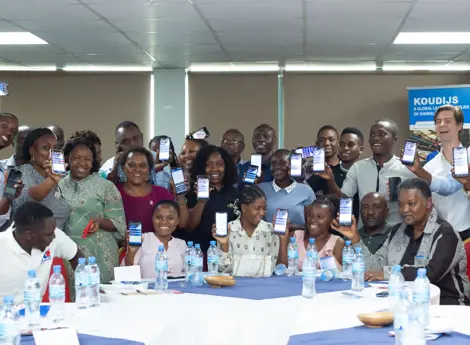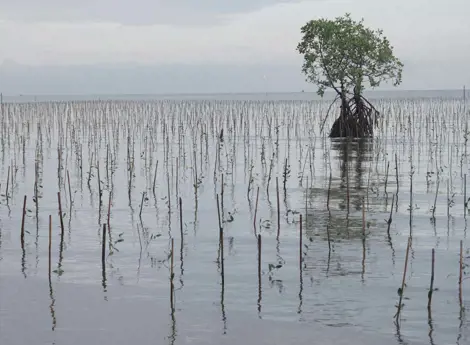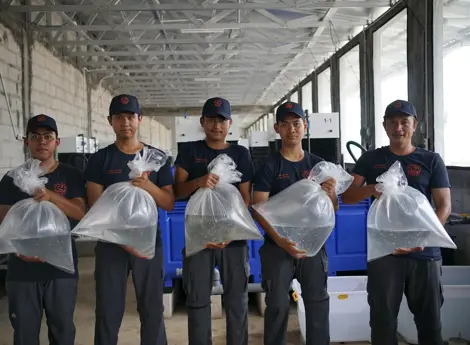Using genetics to improve yields for fish farmers in Indonesia
Indonesia is one of the world's leading producers of farmed fish and seafood. To consolidate this position, the government aims to increase sustainable aquaculture in the coming years in collaboration with various public and private partners. In 2019, De Heus was one of five Dutch companies who partnered in FishTechIndonesia, a project headed by Larive International, which promoted sustainable and innovative aquaculture production systems and best practices locally.
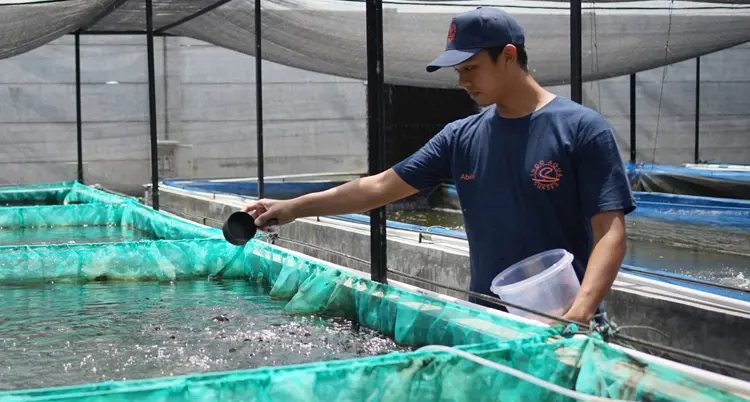
Building on this success, De Heus Indonesia and Larive International have partnered in a new project that focuses on improving tilapia genetics so that local fish farmers can achieve better technical results. Bettina Cavenagh is Director of Clarity Research, Larive's local partner in Indonesia. She and Budi Mulia, Fish Technical Support Manager, De Heus Indonesia, explain how they're introducing a new breed of tilapia that's good for farmers, De Heus and the environment.
Why is a partnership like this so important to aquaculture in Indonesia?
Bettina: "Indonesia produces about 6 billion tilapia fry (newly born fish) each year, but not all of them grow into full adults. There's a high mortality rate due to inbreeding and other factors, so fish farmers aren't making high returns. By introducing better genetics, we aim to increase survival rates and farmers' profits.
"Budi: "Male tilapia grow faster and are about 40% to 50% bigger than females. That's why hormones are generally used to change female tilapia into males. But hormones also weaken the immune system of fish, contributing to higher mortality. And if hormone-treated fish escape into the natural environment, they disturb local ecosystems. Overuse of hormones can also harm human health too, particularly fish farm employees. Hormones are banned in fish production in the EU, and other countries are following suit because of consumer concerns. De Heus is participating in this project because we want to introduce a new strain of tilapia that produces a higher number of males without the use of hormones."
How did this project develop?
Bettina: "Til-Aqua, a company in the Netherlands, breeds YY tilapia which when crossed with a normal female produces all-natural male tilapia (NMT). They're one of the few companies in the world doing this. Towards the end of the FishTechIndonesia project in 2020, the Covid-19 pandemic hit and Til-Aqua needed to re-evaluate its business strategy, so they offered us the grandparent stock of YY tilapia. In tilapia farming, you can usually only buy parent stock which you have to repurchase on a semi-annual basis but you don't have to do that with grandparent stock. Til-Aqua's offer was a golden opportunity to become self-sufficient with this innovative tilapia strain and De Heus Indonesia came on board as our partner."
Budi: "De Heus is one of the largest freshwater feed producers in Indonesia so we have access to fish farmers. The partnership with Larive is called PT. Indo Aqua Sukses (IAS). Together, we've built a hatchery for the new strain of tilapia. It uses a recirculation aquaculture system (RAS) and other innovative technologies we introduced during FishTechIndonesia. Til-Aqua is giving us training to ensure we use international best practices. Here, we breed this improved tilapia strain and after the fry are hatched, we sell them to fish farmers."
Why is genetic technology the answer to the challenges with fish farming in Indonesia?
Bettina: "NMT are 99% naturally male and have a much higher survival rate due to a stronger immune system. Because the NMT process doesn't use hormones, there's no risk to the environment or human health And NMT are much better for fish farmers."
Budi: "These NMT fry are also more uniform in size than hormone-treated fish. In a tilapia hatchery, you normally wait until the newly born fry float to the surface of the pond and collect them after about 18 days regardless of their age. With NMT fry, we can collect the eggs every 10 days, grade them into four groups based on their stage of development and make sure they're uniform in size. This benefits fish farmers as well. You can't do this with hormone-treated fish."
“Farmers achieve optimum productivity so they can expand their business.”
How does the partnership benefit De Heus Indonesia, Larive and local fish farmers?
Budi: "When fish farmers do well so does De Heus Indonesia. With the IAS project, we are providing fish farmers with high-quality NMT fry that grow well with our feed. Farmers achieve optimum productivity so they can expand their business. In addition, we're helping to protect the environment and ensure the success of the aquaculture sector in Indonesia. It's a symbiosis between farmers and our feed factory."
Bettina: "De Heus provides us with high-protein aquafeed that doesn't contain soybean meal (SBM), which is more common in Europe. No other company in Indonesia is producing this customised feed and it's been a huge contribution to the success of the project. In general, it's quiet common to use SBM in aquafeed because it's an economical option. But SBM contains phytoestrogen which can convert male fry into females during the first two weeks of development. So De Heus Indonesia produces aquafeed without SBM which contributes to better results."
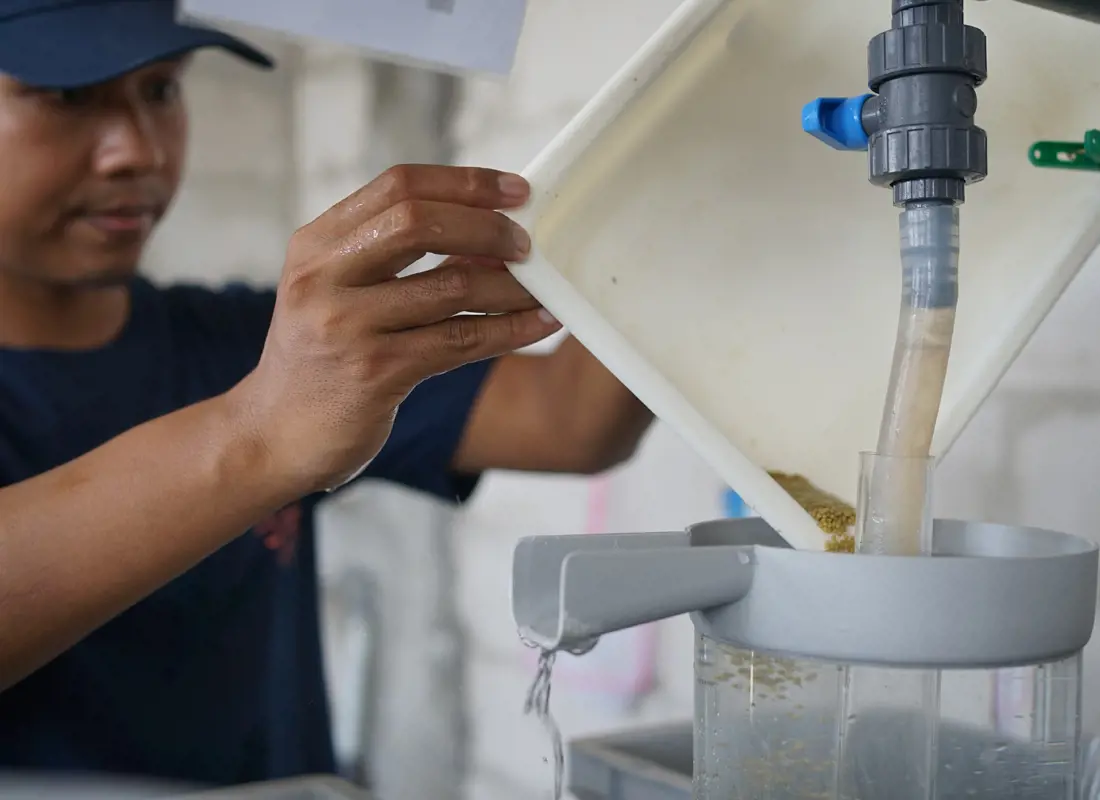
What are the results of the IndoAqua-Success project so far?
Bettina: "We're still in the start-up phase, but we've scientifically shown that the offspring we sell are 99% male produced without hormones. We're currently in the process of breeding our next generation of YY tilapia females and we'll know within three months whether we've been successful. We now have everything in place to begin large-scale commercial production."
Budi: "We are introducing the NMT fry to farmers and monitoring performance. It's too early to say whether we've succeeded. It may take another four months. In the long-term, we want to meet our customers' requirements for healthy, sustainable tilapia fry."
How does the partnership benefit local communities in Indonesia?
Bettina: "Our hatchery is in Majalengka, a rural area, so the local community has been involved since the beginning. The hatchery was constructed by local workers rather than a large construction company. There's also a community fish farm nearby, so we also want to train local people so they can conduct performance growth and feed trials at these facilities. In this way they can earn money and get professional training."
What are your future ambitions for the project?
Bettina: "The cost of transporting fry is huge, so our first step is to expand to North Sumatra which is the biggest tilapia market in Indonesia. Currently, large volumes of tilapia are farmed at Lake Toba, but the water is becoming polluted as a result. The government also wants to develop the lake as a tourist destination. So we plan to set up a satellite hatchery in the region and entice fish farmers away from the lake with more sustainable techniques using RAS and NMT technology. After that, depending on market conditions, we want to move into Sulawesi and Kalimantan where we can set up satellite hatcheries closer to local markets."
Budi: "First we have to get it right in Indonesia. But if we're successful here, we could export the NMT technology to other countries where we're active. Earlier this year, I had a meeting in Vietnam with the Asian De Heus team. Our business units in Myanmar and Vietnam are interested in the RAS system and the tilapia genetics. They want to test the NMT fry against local fry and if the results are positive we want to look at exporting the NMT parent stock."




